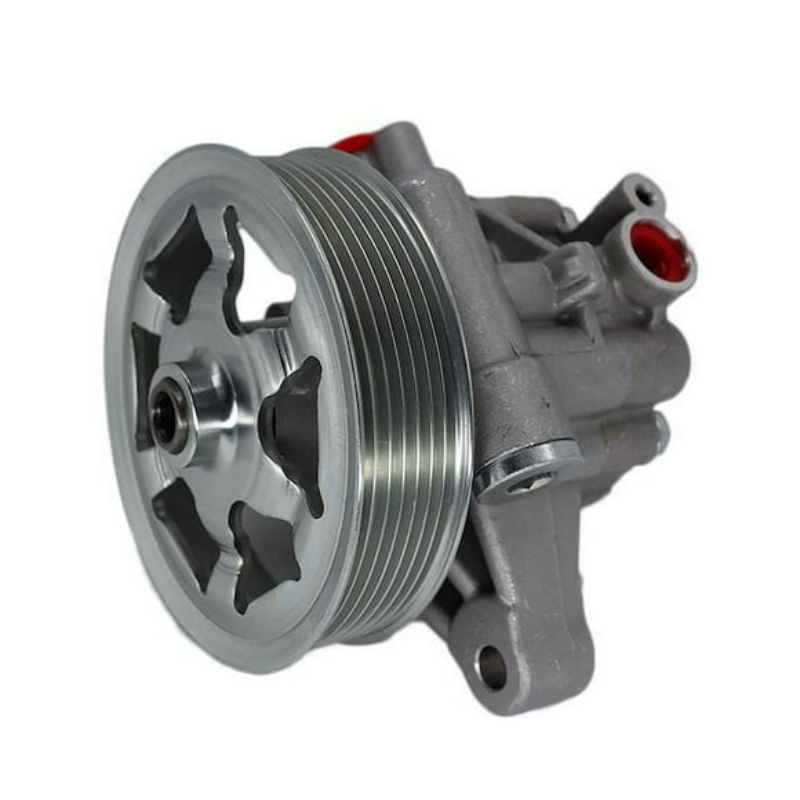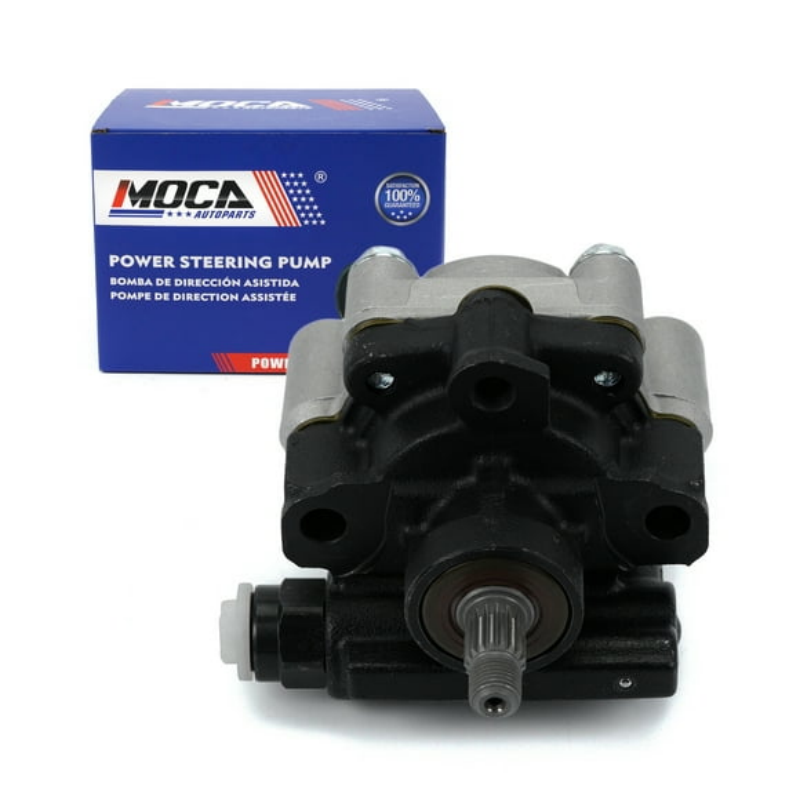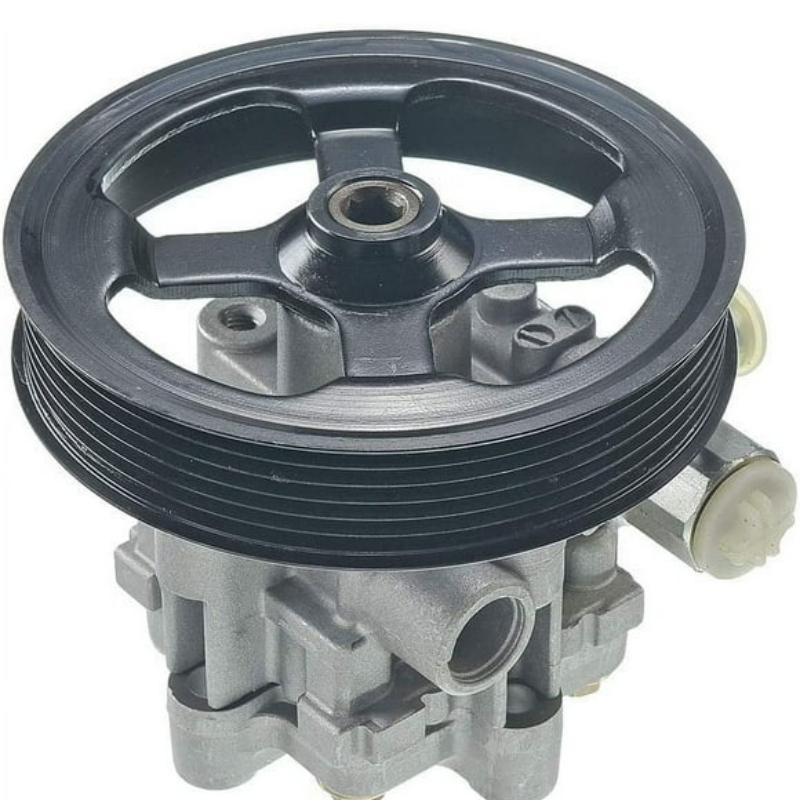Understanding The Mystery of Power Steering Pump Whining
In the world of vehicle maintenance, few sounds are as concerning as the persistent whine that can emanate from the power steering pump. For many drivers, the noise can evoke feelings of dread and confusion, leading to questions about the overall health of their vehicle. Power steering is essential for smooth maneuvering, and when it begins to whine, it can indicate deeper issues that, if left unaddressed, could lead to costly repairs. Understanding the causes behind power steering pump whining, its symptoms, and remedies can save you time, money, and stress. In this comprehensive guide, we will explore the intricacies of power steering systems, delve into why these pumps whine, and provide practical solutions to quiet that unsettling noise. Whether you are a seasoned mechanic or a casual car enthusiast, this article is here to enlighten and assist you.
What is a Power Steering Pump?
To fully comprehend the phenomenon of power steering pump whining, it’s essential first to understand what a power steering pump is and what role it plays in your vehicle. At its core, a power steering pump is a critical component of a vehicle’s power steering system, which acts to reduce the effort needed to steer the vehicle. This system allows for smooth and effortless changes in the direction of the wheels, contributing significantly to driver comfort and vehicle safety.
Most vehicles are equipped with either a hydraulic or an electric power steering system. The hydraulic system uses pressurized fluid to assist in steering, while electric systems rely on electric motors. In both cases, the power steering pump facilitates steering by delivering the necessary hydraulic pressure or electric assistance.
The power steering pump often operates more efficiently when it is well-maintained, regularly serviced, and filled with adequate levels of power steering fluid. However, when the pump starts to wear out or if there are issues with fluid levels, it may produce a whining noise that can alert drivers to potential trouble.
Common Causes of Power Steering Pump Whining
There are several reasons why your power steering pump might start to whine. Understanding these causes is the first step to addressing the issue. The following factors commonly contribute to power steering pump whining:
- Low Power Steering Fluid: One of the most prevalent reasons for a whining noise is low fluid levels. When the power steering fluid is below the required levels, it can lead to decreased lubrication and increased friction, resulting in noise.
- Air in the System: Air trapped in the power steering system can create issues similar to low fluid levels. This air can lead to cavitation, which is the formation of vapor bubbles that implode and cause noise.
- Worn or Damaged Pump: Over time, the components of the power steering pump can wear out, leading to abnormal sounds. A damaged bearing or deteriorated internal parts can significantly impact the pump’s function.
- Contaminated Fluid: Power steering fluid that has become contaminated with debris or has degraded over time can affect the performance of the pump. This contamination can lead to increased friction and reduce the pump’s efficiency, causing it to whine.
- Belt Issues: If the power steering pump belt is loose, worn, or frayed, it can result in slippage, which may also produce a whining sound. Proper tension and condition of the belt are essential for the effective operation of the pump.
- Cold Weather: In colder climates, power steering fluid can thicken, making it more challenging for the pump to circulate the fluid properly. This thickening can cause an audible whining noise until the fluid warms up and becomes less viscous.
Each of these factors can contribute to the whining sound emanating from your vehicle. Recognizing these causes can help you diagnose issues early and take preventative measures to avoid serious damage.
Signs You May Need to Address Whining
Detecting the whining noise is just the beginning; understanding the accompanying signs can point to the urgency of the situation. Here are some crucial indicators that your power steering pump may be failing or in need of attention:
- Increased Steering Effort: If you notice that it has become more challenging to steer your vehicle, especially at low speeds or during parking maneuvers, it may signal a problem within the power steering system.
- Fluid Leaks: Frequent inspections can reveal leaks around the power steering pump or hoses. If you find puddles or damp spots under your vehicle, pay attention, as leaks can exacerbate whining noises.
- Changes in Performance: If your steering feels inconsistent or if you experience a “grabbing” sensation when steering, these problems could be related to the power steering pump.
- Squealing or Grinding Noises: If you hear additional noises accompanying the whining, such as squealing or grinding, it’s a clear sign that your power steering pump may be reaching the end of its life.
- Dashboard Warning Lights: Check your vehicle’s dashboard indicators. If warnings about the power steering or low fluid levels appear, it’s time to investigate further.
Proactive maintenance and attention to these warning signs can ensure your vehicle remains safe and reliable on the road.
The Risks of Ignoring Power Steering Pump Whining
Failing to address power steering pump whining can lead to significant repercussions. Ignoring the noise might seem inconsequential at first, but over time, the underlying issues can escalate into serious problems. Here’s a closer look at the potential risks:
- Complete Pump Failure: Continuous use of a malfunctioning power steering pump can lead to its complete failure, resulting in an expensive repair or replacement. Once the pump fails entirely, the vehicle may become exceedingly difficult to steer.
- Compromised Safety: A malfunctioning power steering system can pose significant safety threats. Difficulty in steering can lead to accidents, especially in critical situations that require quick maneuvers.
- Damaged Components: A whining power steering pump can cause stress on the connected components such as the steering rack, hoses, and even the serpentine belt. This added strain can lead to premature wear and necessitate costly repairs.
- Operational Inefficiency: A malfunctioning pump can affect your vehicle’s overall performance, leading to decreased fuel efficiency and increased wear on tires due to improper alignment and handling.
- Increased Repair Costs: Addressing minor issues early on can save you from exponential repair costs later. Ignoring power steering pump whining may lead to more complex and expensive repairs down the line.
Recognizing the potential repercussions of a whining power steering pump can motivate you to seek prompt assistance, minimizing the risk of more significant issues and expenses in the future.

Diagnosing the Problem
When it comes to diagnosing the power steering pump whining, it’s important to approach the issue methodically. Here are the steps you can take to identify the problem:
- Listen Carefully: Try to pinpoint when the whining occurs. Note if it happens when turning the wheel or when the vehicle is idle. This can help diagnose whether the issue is related to steering or fluid levels.
- Inspect Fluid Levels: Check the power steering fluid reservoir. If fluid levels are low, top them up with the manufacturer’s recommended type. If you notice a sudden drop in fluid levels, this could indicate a leak.
- Look for Leaks: Check for puddles of fluid beneath your vehicle. Pay attention to seals and hoses connected to the power steering system. Any visible leaks should be addressed promptly.
- Examine the Pump: Visually inspect the power steering pump for signs of wear and tear. Look for cracks, leaks, or damaged components, such as a frayed belt.
- Consult the Owner’s Manual: Refer to your vehicle’s manual for any specific recommendations related to your power steering system. This can provide valuable insights and specifications needed for maintenance.
- Seek Professional Help: If the diagnosis is beyond your skill level or if you are unsure, consult a professional mechanic. They have the expertise and tools to provide an accurate analysis and fix any underlying issues.
Taking these steps will help you identify the problem accurately and take appropriate action, whether that is a simple fluid top-up or a more extensive repair.
Solutions to Power Steering Pump Whining
Addressing power steering pump whining typically involves a few straightforward solutions, depending on the diagnosed issue. Here are some common remedies to consider:
- Top Up Power Steering Fluid: If low fluid levels are the culprit, simply topping up the reservoir can often resolve the whining. Make sure to use the correct type of fluid recommended by your vehicle’s manufacturer.
- Bleed the System: If air is trapped in the system, bleeding the power steering can help remove the air and restore proper functioning. This usually involves turning the steering wheel back and forth while the engine is running, ensuring the system is bled of any air bubbles.
- Replace the Fluid: If the power steering fluid appears discolored, contaminated, or has a burnt smell, it’s time for a replacement. Refer to the owner’s manual for guidance on how to flush and replace the power steering fluid properly.
- Inspect and Replace Components: If worn or damaged components such as belts and hoses are identified, replace them immediately before they cause further issues. Regular inspection can help catch these problems early.
- Professional Intervention: If the whining persists despite taking initial steps, it may be time to take your vehicle to a qualified mechanic. They can provide a more thorough inspection and recommend repairs.
By addressing the whine promptly and effectively, you can maintain the integrity and functionality of your vehicle’s power steering system.
Preventing Future Whining
Preventative measures can go a long way in keeping your power steering pump running smoothly. Simple maintenance can prevent the common issues that lead to power steering pump whining. Below are some valuable tips:
- Regular Maintenance: Get your power steering system inspected regularly as part of your vehicle’s maintenance schedule. Mechanics can catch potential issues before they become serious.
- Fluid Checks: Routinely check power steering fluid levels and top them off as necessary. It’s a small but impactful task that ensures your system remains lubricated.
- Use Quality Fluid: Always use the recommended type of power steering fluid for your vehicle. Using subpar fluid can cause increased wear and tear on the pump.
- Monitor Performance: Stay alert to any changes in steering performance or abnormal noises. Early detection allows for timely action and prevents extensive damage.
- Protect Against Contaminants: Ensure that seals on connections and reservoirs are intact to avoid contamination from dirt and debris that could affect the power steering fluid.
- Drive Wisely: Avoid turning the steering wheel to its extreme positions for extended periods, especially while stationary. This puts unnecessary stress on the system and pump.
By incorporating these practices and staying proactive, you can keep your power steering pump in good working order and reduce the likelihood of future whining.

Conclusion
A whining power steering pump can be a source of concern for any driver. It’s not just an annoying sound; it may indicate underlying problems that could lead to significant consequences if ignored. Through this in-depth exploration, we have highlighted the various causes of power steering pump whining, how to diagnose the issue, and detailed solutions to address it effectively.
Understanding the nuances of your vehicle’s power steering system is vital for maintaining its performance and ensuring your safety on the road. By staying attuned to changes in your steering, performing regular checks on fluid levels, and being proactive in addressing any concerns, you can mitigate the risks associated with a whining pump.
Ultimately, whether you’re dealing with a simple fluid issue or a more complex problem requiring professional intervention, taking action quickly can save time and hassle. Remember, the goal is not just to quiet the whine but to keep your vehicle running smoothly and safely for years to come. Be proactive, stay informed, and enjoy a seamless driving experience.
